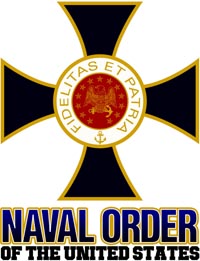News & Tall Tales. 1800s.

The Camel Experiment
Fiction
|
Following the California Gold Rush of 1849, there became an increasing need to protect and supply the growing population of Americans in the southwest. After attempts to build a transcontinental railroad succumbed to sectional politics, U. S. Secretary of War Jefferson Davis decided to experiment with camels as a means for transporting military provisions across west Texas and the "Great American Desert."
As a result, Major H. C. Wayne was dispatched to the middle-East in 1855 to study and procure the first group of dromedaries. He returned the following year with thirty-three animals. They disembarked, together with several Greek and Turkish drivers, at Indianola, Texas on May 14, 1856. The curious looking caravan stopped in San Antonio, where it was demonstrated that one of the "beasts of the desert" could rise from its knees with two bales of Texas cotton tied on its back. The herd was then moved to more permanent quarters at Camp Verde, just south of the present town of Kerrville.
Another herd of 41 camels arrived the following year.
June 6, 1857, The Los Angeles Star, Los Angeles, California
The Camel Experiment.
In the report of Jefferson Davis, Secretary of War, we find the following interesting account of the experiments which have been made with the camels recently imported into Texas by the General Government:
Since the last annual report the cargo of camels, thirty-two in number, then referred to as being expected, have been landed on the coast of Texas and taken into the interior of the country. Much time was required for their recovery from the effects of a long sea voyage, and but little use has been made of them in the transportation of supplies.
On one occasion it is reported that a train consisting of wagons and camels was sent from Camp Verde to San Antonio, a distance of sixty miles, over a road not worse than those usually found on the frontier; and the result, as given, is that the quantity brought back by six camels (3647 pounds) was equal to the loads of two wagons drawn by six mules each, and the time occupied by the camels in returning was two days and six hours; that by the wagons four days and thirty minutes.
On another occasion the capacity of the camels for traveling over the steep acclivities and on the muddy roads was tested with the most satisfactory result. Instead of making the detour rendered necessary by the location of the road to avoid a rugged mountain, impracticable for wagons, the camels followed a trail which passed directly over it, and a heavy rain occurring whilst they were at the depot to which they had been sent for supplies, the road was rendered so muddy that it was considered impassible to loaded wagons. The train of camels were, nevertheless, loaded with an average of 328 pounds each, and returned to their encampment, a distance of sixty miles, in two days suffering, as it is reported, no interruption or unusual fatigue from the mud over which they passed, nor the torrent of rain which fell upon them.
These tests fully realize the anticipations entertained of their usefulness in the transportation of military supplies. The experiment of introducing them into the climate of the United States has been confined to the southern portion of Texas. Thus far the result is as favorable as the most sanguine could have hoped. Of thirty-four animals it imported, two have died one from accidental injury and the other from cause unknown. When it is remembered that this is the year of their acclimation in a climate subject to sudden and violent changes, and to the use by them of herbage very different from that of the countries from which they were imported there is every reason to believe that as little difficulty will be encountered in the acclimation of the camel as that of the horse or the ox.
The very intelligent officer who was sent abroad to procure them, and has remained in charge of them, expresses entire confidence, of their adaptation to the climate of a large part of the United States.
Ultimately, however, the camels failed. Not only was the experiment interrupted by the Civil War, their soft-padded feet were unsuitable for travel over much of the rocky southwestern terrain. They frightened horses and they were detested by their handlers, who were accustomed to more docile mules.
The camels fell into Confederate hands at the beginning of the Civil War, then back to the Union Army in 1865. Most were sold at auction in 1866. A few escaped into the west Texas desert and are known to have survived until late in the nineteenth century.

The Naval Order of the United States has a history dating from 1890. Membership includes a wide range of individuals, many with highly distinguished career paths.
The San Francisco Commandery meets the first Monday of each month at the San Francisco Italian Athletic Club in San Francisco, California and holds two formal dinners each year.



 Copyright ~ 1998-2018.
Copyright ~ 1998-2018. 